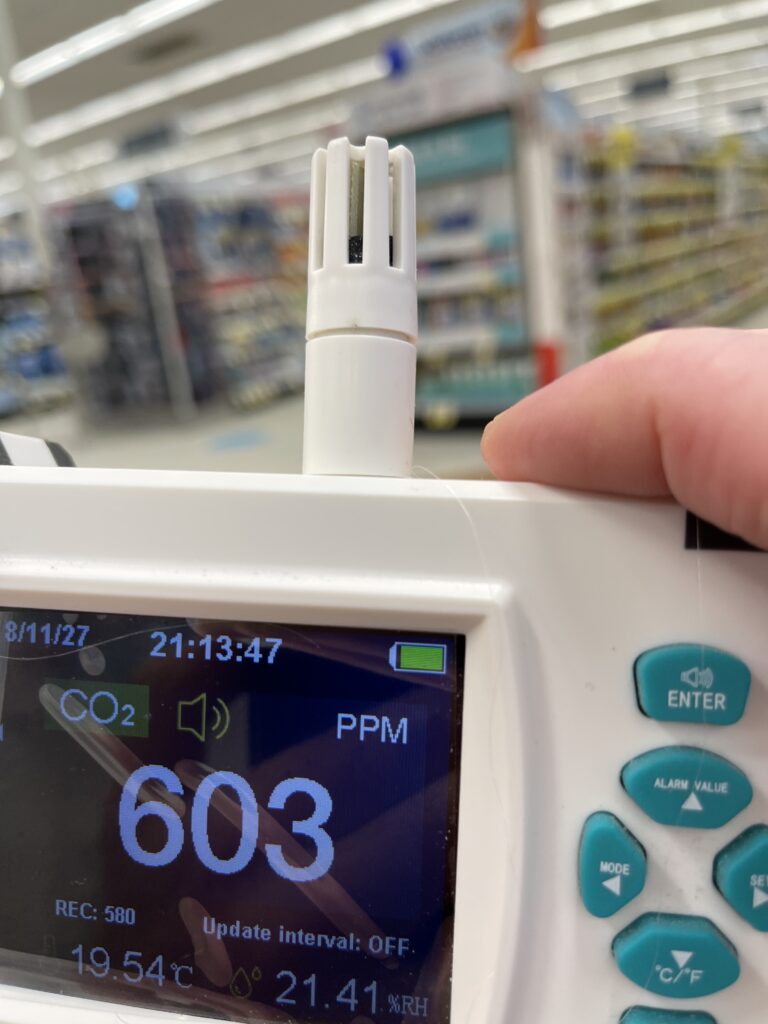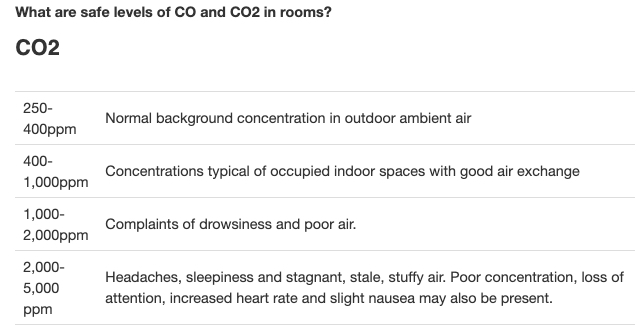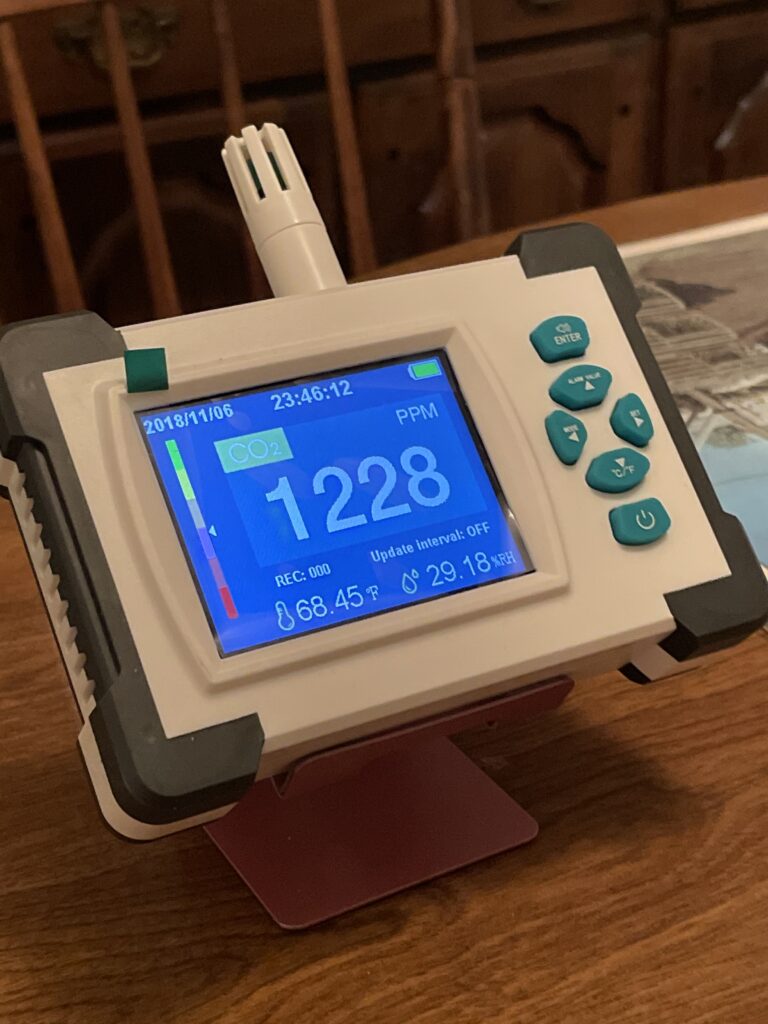Note: tomorrow I’ll have an important update on the coming surge of the B117 variant.
The Washington Post ran a big piece on CO₂ monitors last week, and I felt smug, because I scooped ’em with my Jan 23 post. CO₂ is a good indication of air freshness, which is important because fresh air dilutes any contaminants, including virus particles. Their article:

I love my monitor. I take it into stores and other places I want to check. This photo is from a prescription pickup today at Walgreen’s.
603 is a good value. Pure outdoor fresh air is under 400; anything indoor under 900-1000 is okay; above is not so safe, so get out of there as promptly as you can. Here’s what one website says about good and bad ventilation:

Remember, CO₂ is not the virus – it’s just a measure of air freshness, a measure of ventilation. But it’s valid: CO₂ comes from people exhaling, which is exactly how virus particles also get into the air from infected lungs. (You know all those dead people? That’s what happened to every one of them.) So high CO₂ levels really are a sane warning signal for potentially unsafe air.
CO₂ readings I’ve taken recently:
- Grocery store: near the door (which opens often), 400-600. Back corner in the produce section: 1100+.
- This doesn’t mean the air is necessarily poison, but it could be, so don’t linger: do your business and get out. High readings mean the building’s ventilation is not mixing in fresh air throughout the store, so virus could accumulate.
- Costco: same as the grocery store. Fresh air at front (big open doors), not at back.
- Kohl’s, back of store (where I go for free Amazon returns): 900+. There were long lines nearly every time I went in, and I was not gonna hang around in stale air for 20 minutes. So I came back home and got on chat with Amazon and said it simply wasn’t safe to stand in those lines, and they promptly sent me a different return label, to let me drop it at UPS for free (normally $7.50).

Good whole-building ventilation systems (e.g good schools and auditoriums) actively monitor CO₂ in returning airflow and will blend in fresh air (from outside) automatically. Cool! (More than cool; cold, unless the system also heats the air.)
This is also a good reason to go grocery shopping early in the day, because as more people arrive later, more un-fresh air (more CO₂ and potential virus) will accumulate.
And then there’s my own dining room: 1228.
The chart above makes me wonder if this is the real reason cracking a window open in my office wakes me up: it’s not just the brisk air, but reducing my own accumulated CO₂.
Why didn’t Mom tell me fresh air is good for me?? Oh wait, she did. Yay Mom!


My CO2 monitor (one of your early links, a different model than your choice) measured ~1400 at the back of Costco. I moved quickly. One strategy I use is to go to certain stores at dinnertime, 6-7pm. Trader Joes is one…zero wait, and in all stores far fewer people.
Good strategy, good thinking!
Doncha love it when brains are useful for surviving??
Thanks for the “Heads up” on the Kohl’s issue and the Amazon solution.
Excellent article.
Howard Luks MD, who first pointed me to CO2 monitoring, added this on Facebook:
“With my Aprilaire exchanger and thermostats set to turn on the fan for 30 min every hour we are routinely 500ppm despite 4 people in the house. It is amazing how fast and how high the levels can go without ventilation. If we are all eating in the kitchen, right before the fans kick on it’s around 750-800. Then it rapidly returns to baseline.”
Dave, I would be wary of readings below 400 ppm. The concentration of CO2 in the atmosphere already exceeded this level some time ago. https://e360.yale.edu/digest/co2-concentrations-hit-highest-levels-in-3-million-years